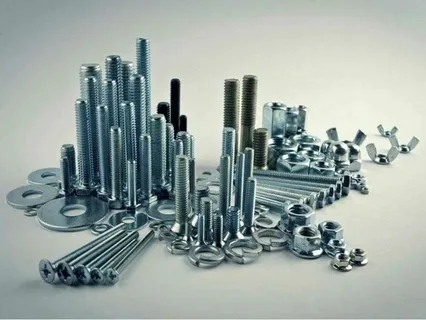Stainless steel is not just a material – it’s a symphony of durability, strength, and versatility. From industrial pipelines to household fixtures, stainless steel pipes, screws, and fittings play a fundamental role in countless applications. But navigating the world of stainless steel can be overwhelming with its myriad options and specifications. That’s where this comprehensive guide comes in.
Whether you’re a professional in the industry or a DIY enthusiast looking to update your space, The Stainless Symphony is here to demystify the world of stainless steel, providing you with all the information you need to make informed decisions about your projects. So grab your conductor’s baton and join us as we dive deep into the world of stainless steel pipes, screws, and fittings.
Table of Contents
The Composition of Stainless Steel
At its core, stainless steel’s anti-corrosive properties stem from forming a thin, adherent layer of chromium oxide on the surface. This invisible layer, or passive film, forms when chromium reacts with oxygen in the air or water. It seals the steel, preventing further oxidation and protecting it from rust. However, it is the manipulation of the alloying elements within stainless steel that gives it a range of characteristics.
For instance, adding carbon allows the steel to achieve greater hardness and edge retention, which is crucial in producing cutting tools. On the other hand, incorporating elements like nickel contributes to the flexibility and toughness of the steel, making it ideal for more malleable applications, such as wire cables and hardware cloth. Other elements, such as molybdenum, can improve pitting resistance, especially in environments with high chloride exposure or acidic conditions.
Types of Stainless Steel Pipes
Stainless steel pipes are categorized into several types based on their production method and intended use. One of the most common is the Seamless Pipes, made from a solid round steel. This type is favored for high-pressure, high-temperature applications due to its strength and versatility.
On the other hand, stainless steel tubing is formed by welding or forming sheets of steel into a cylindrical shape, with the seam either welded or seamless. This type is more economical and suitable for lower-pressure applications such as plumbing but may be less firm or corrosion-resistant.
Each type can be further divided based on their shapes, sizes, and wall thicknesses, commonly called the “schedule.” The most popular grades used in stainless steel pipes are 304 and 316, each having qualities suited to different environments and tasks. Grade 304 is renowned for its good formability and resistance to corrosion. In contrast, Grade 316 offers superior corrosion resistance, making it an excellent choice for marine applications or exposure to harsh chemicals.
All About Stainless Steel Screws
When delving into the world of stainless steel screws, one must appreciate the nuances that differentiate various types. Stainless steel screws are crucial components in mechanical fastening systems, designed to deliver a combination of strength, precision, and durability. With their unparalleled corrosion resistance, they are ideal for applications that require longevity, especially in harsh or outdoor environments. The most common types of stainless steel screws include:
- Machine Screws: Precision-threaded for use with tapped holes or with nuts, these are ideal for applications that require disassembly and reassembly.
- Sheet Metal Screws: These screws have sharp threads that cut into sheet metal, plastic, or wood, and they often feature a pointed tip.
- Self-Tapping Screws: These create their threads as they are driven into the material, facilitating fast and efficient assembly.
- Self-Drilling Screws (Tek Screws): These screws combine a drilling tip and a tapping thread, eliminating the need for a pre-drilled hole.
Furthermore, the distinction between 304 and 316 grades is also significant for screws. While 304-grade stainless steel screws are sufficient for most general-purpose applications, 316-grade screws are preferred in environments exposed to saltwater, chlorides, or chemicals due to their enhanced corrosion resistance.
Fittings and Their Types
Stainless steel fittings are essential in the plumbing, gas, and fluid transfer industries. These connectors function as an interface between two pipes or tubes to facilitate flow regulation, direction changes, or joining of different types of pipes. The most commonly used fittings are elbows, tees, couplings, unions, and adapters.
Similar to pipes, stainless steel fittings are also classified based on their method of production and characteristics. The two primary types are Butt-Weld Fittings and Threaded Fittings. Butt-weld fittings involve welding the fitting to the pipe end, while threaded fittings use threads to secure them. Another type is Compression Fitting, which connects pipes without welding or threading by compressing a ferrule onto the pipe’s surface. These fittings are commonly used in high-pressure fluid transfer applications, such as hydraulic systems.
Conclusion
In conclusion, stainless steel is a versatile and essential material that has transformed industries due to its unique properties and capabilities. Its various forms, including pipes, screws, and fittings, serve critical functions in countless applications across multiple industries. As technology and innovation continue to advance, the possibilities for stainless steel will only grow, making it a material that truly stands the test of time.

